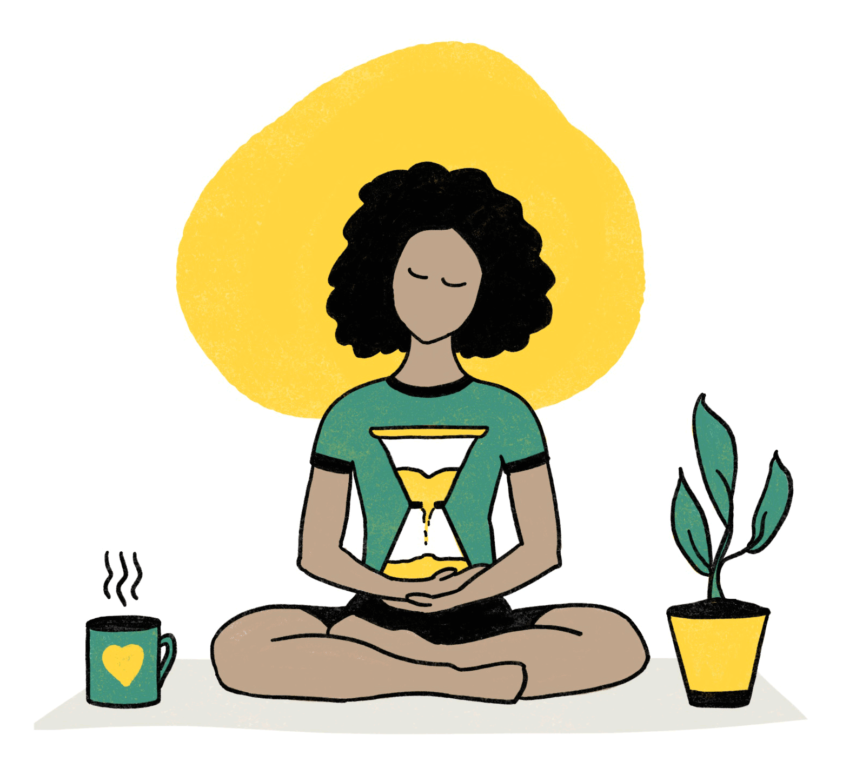Article begins
I came to meditation because my brain is always running. The part of an academic’s job that requires me to think and theorize sometimes grows much larger than the part that breathes and feels my way through. Can you relate?
In this global pandemic, meditation is one of the tools that helps me stay grounded and calm enough to feel my feelings without always being overwhelmed by them.
Below, I offer tips and affirmations to support anyone who wants to start or sustain a meditation practice. You don’t have to do a long sit for it to be effective. Even a few minutes a day can have in-the-moment and long-term benefits.
A comfortable posture is the foundation for your practice. Many teachings say sit cross-legged on the floor or cushion with a straight spine. Real life and real bodies can’t always be forced into that classic pose. If you are comfortable sitting cross-legged, go for it. If, like me, you have tight hips, you can place blocks or blankets under your knees for support or sit upright with straight legs. You can sit in a chair with your feet planted. You can lie on your back. (Truth: when I meditate in the mornings, I am usually lying flat on my back with one hand on my heart and the other on my belly). The point here is to gather whatever support that will allow you to have a straight-ish spine. Discomfort is not the name of the game, y’all.

Choose an anchor. In mindfulness meditation, the focal point is the breath, but that isn’t feasible for everyone, especially those with PTSD or traumas that make focusing on the breath difficult. In lieu of the breath, you can choose a steady point on the ground, a sound, or a mantra.
Notice and befriend your thoughts. Your thoughts are not an enemy to your practice. They are integral to it. Part of the practice of meditation is noticing when we wander. When you notice yourself thinking, don’t talk bad to yourself. Acknowledge it, come back to your anchor, and keep breathing.
Find a style of meditation that works for you. There are so many styles of meditation. I was trained in mindfulness meditation, and in my personal practice I primarily meditate with no sound unless I am listening to a guided meditation. That may not be your jam. Maybe you want to try out some visualization or ground your practice within a particular spiritual tradition. Seek resources to support you.
Grace is always appropriate. Be kind and gentle with yourself. We can underestimate how powerful a stillness practice can be. When we sit, we are agreeing to meet ourselves and whatever shows up. If you find yourself struggling and need to step away from the practice, that is OK. You can begin again when you’re ready.
Illustrator bio: Charlotte Hollands created artwork as well as spot illustrations of experiences from social distancing life for AN’s pandemic issue. Hollands is an illustrator, artist, and ethnographer who is developing new ways to use illustration within social science research and is currently completing her first graphic nonfiction book, written by Alisse Waterston.

